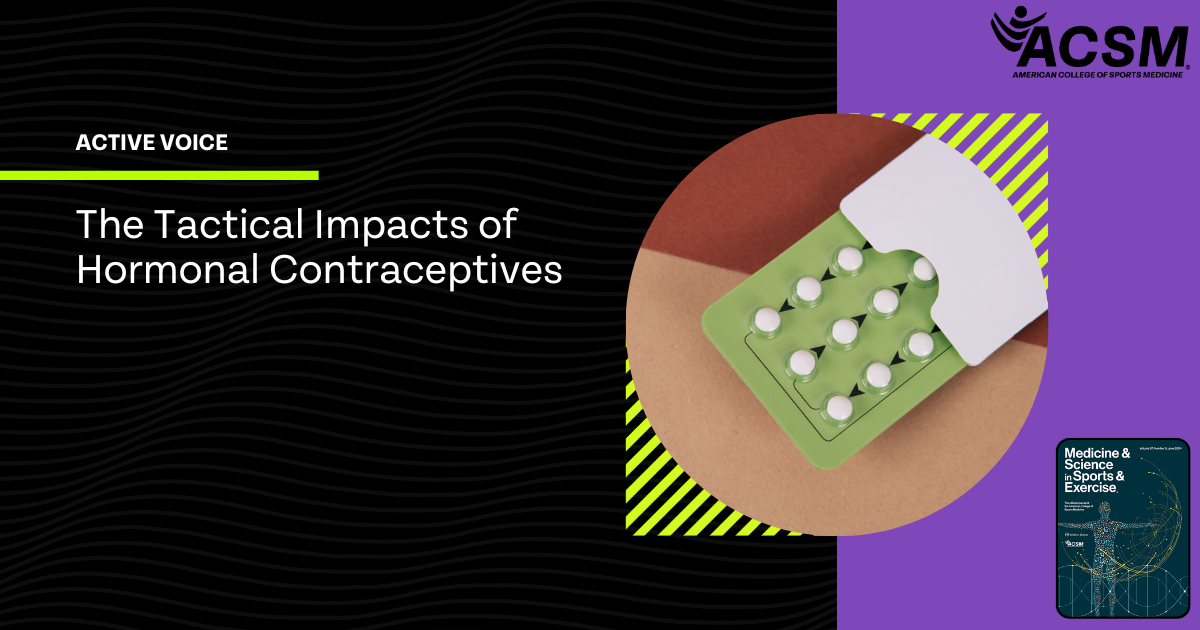Hormonal contraceptive use is common in physically active women, including athletes and military personnel. Some estimates in the United Kingdom suggest more than half of these populations take hormonal contraceptives compared to approximately one third of the general population. Hormonal contraceptives come in many different forms, with the primary aim to prevent pregnancy. The combined oral contraceptive pill is often reported as the most common choice and contains both synthetic estradiol (ethyinyl estradiol) and/or progestogens (progestins). Progestin-only contraceptives contain no estradiol and are available as an oral pill, subcutaneous implant and intramuscular injection. Hormonal contraceptives alter endogenous production of estradiol, the sex steroid hormone that has many important regulatory roles in human function, including bone metabolism. Accordingly, there has been much growing interest on how hormonal contraceptives impact aspects of health and performance, but most studies conducted to date have been small and cross-sectional.
Our study, published in the March 2025 issue of Medicine and Science in Sport and Exercise®, sought to investigate the effect of hormonal contraceptive use on a range of health and performance outcomes in women completing 14 weeks of basic military training. This period is typically characterized by heightened physical activity, where new recruits undertake aerobic endurance training, strength and conditioning, military-specific fitness training (obstacle course, circuit training), military drill, progressive loaded marching and basic military skills (field exercise, weapon handling). The stimulus is novel and can result in marked adaptations in musculoskeletal tissues, such as increases in muscle mass, bone density and bone size. The arduous nature of this training means many recruits develop musculoskeletal injuries, and being female is a primary risk factor. We compared women not using any hormonal contraceptives (n=182) to women using the combined oral contraceptive pill (n=184) and women using progestin-only methods (n=144). Our findings showed that military training increased physical performance (faster run time, better maximal lift strength and lower limb power) and improved body composition (increased lean mass, decreased body fat and increased bone density) but physical adaptations were not different between our three hormonal contraceptive groups. Similarly, hormonal contraceptive use was not associated with the incidence of a new musculoskeletal injury or bone stress injury. Therefore, our study indicates that hormonal contraceptive choice does not affect physical adaptations to several months of mixed-mode exercise training.
Despite the similarity between different hormonal contraceptive groups in performance adaptation to exercise training, progestin-only users had higher bone turnover (makers of bone resorption and formation in the blood) and lower bone mineral density (at various sites) than combined oral contraceptive pill users and/or women not using any hormonal contraceptives. These effects are consistent with the effects of low estradiol on bone metabolism and further study on the role of these contraceptives, and more broadly estradiol, on musculoskeletal health in young active women is warranted.
We believe our findings offer wider applicability than just the military. Recruits have passed physical performance and medical entry standards to join the military but are not trained athletes and more approximately represent young, healthy, active women in the civilian population. Therefore, we anticipate these findings will benefit the wider population to support the discussion on hormonal contraceptive choices for young active women.
About the Authors

Thomas O’Leary, PhD, FACSM, is a senior scientist within the Army Health and Performance Research Team in the British Army. Following a PhD in exercise physiology, Tom has spent 10 years researching human performance in the Army, with most of that time leading studies exploring health and performance of women in military roles and skeletal adaptations to military training. Tom has published nearly 70 peer-reviewed academic papers.

Julie Greeves, OBE, PhD, FACSM, is the head of the Army Health and Performance Research Team in the British Army. Julie’s work has spanned 25 years, pioneering original research on musculoskeletal health and human performance in the military. Julie’s research has widely informed army and defense policies and was recognized with an OBE (Officer of the Most Excellent Order of the British Empire) in 2017. Julie holds honorary chair appointments at the School of Medicine, University of East Anglia, and University College London and has published over 140 original papers in peer-reviewed journals.




